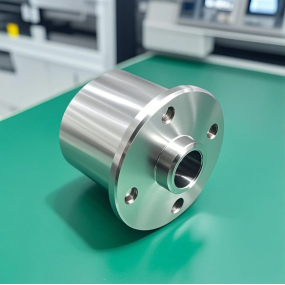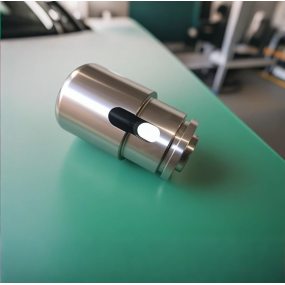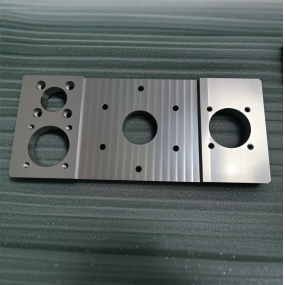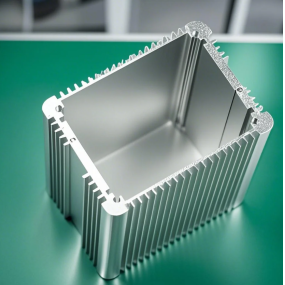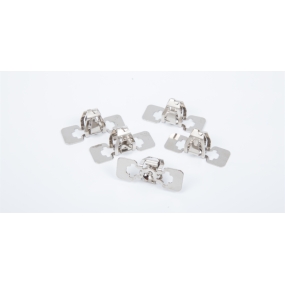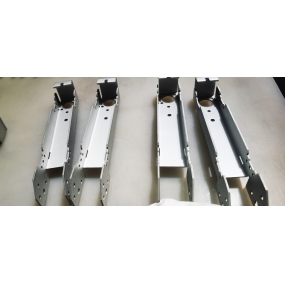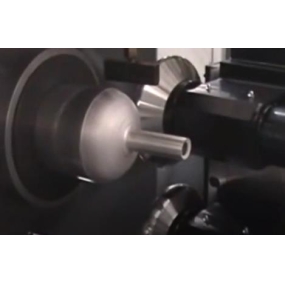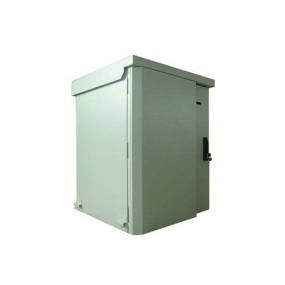Stamping dies are an important process equipment in stamping production for precision stamping parts processing plants. They are useful means to improve product quality, save original processing, and express the technical economy of die products. The durability of stamping dies After a period of operation, the punch and concave dies lose the working size due to frequent wear and tear, and can no longer satisfy the technical conditions of the parts, according to the total number of parts stamped by the stamping die. A pair of stamping dies is determined according to the total number of parts stamped by the stamping die. From planning, machining, installation, adjustment to device use, there are many processes, long cycles, and high processing costs. Therefore, in addition to requiring high production efficiency and fully meeting the quality requirements and technical conditions of the stamping die, the durability of the stamping die itself is also very important.
Stamping die is a special process equipment that is processed into parts in cold stamping processing. It is widely used in process production, but during use, there may be wear and tear. What should be done if the stamping die is found to be worn? Let‘s listen to what professional precision stamping parts processing plants have to say!  The quality of the working parts of the die plus the appearance quality has a very close relationship with the wear resistance, cracking resistance and adhesion resistance of the die, which directly affects the service life of the die of the precision stamping parts processing plant. In particular, the surface roughness value has a great impact on the life of the die. If the surface roughness value is too large, stress concentration will occur during operation, and simple cracks will occur between its peaks and valleys, which will affect the durability of the die. It will also affect the corrosion resistance of the surface of the stamping part, directly affecting the service life and accuracy of the die. Therefore, the following matters should be noted:
The quality of the working parts of the die plus the appearance quality has a very close relationship with the wear resistance, cracking resistance and adhesion resistance of the die, which directly affects the service life of the die of the precision stamping parts processing plant. In particular, the surface roughness value has a great impact on the life of the die. If the surface roughness value is too large, stress concentration will occur during operation, and simple cracks will occur between its peaks and valleys, which will affect the durability of the die. It will also affect the corrosion resistance of the surface of the stamping part, directly affecting the service life and accuracy of the die. Therefore, the following matters should be noted:
1. Timely replacement of worn die guide components and punches.
2. Check whether the gap in the stamping die is unreasonable (too small), and increase the gap in the lower die.
3. Minimize wear and tear, improve smooth conditions, smooth plates and punches. The amount of oil and the number of times of oil injection depend on the processing conditions. Cold-rolled steel plate, corrosion-resistant steel plate and other rust-free scale treatment, oil injection to the mold, oil point for the guide sleeve, oil injection port, lower mold, etc. Oil with light oil. With rust scale treatment, rust powder will be sucked between the punch and the guide sleeve during processing, resulting in dust, so that the punch can not slide freely in the guide sleeve. In this case, if oiled, it will make rust more easily stained. Therefore, when flushing this treatment, instead of wiping the oil clean, differentiate once a month, remove the dust from the punch and lower mold with steam (firewood) oil, and wipe it clean before assembling from scratch. This guarantees that the mold has outstanding smoothness.
4. Improper sharpening methods can lead to annealing of the mold, increasing wear and tear. Soft abrasive grinding wheels should be used, with a small amount of knife, sufficient coolant, and regular grinding wheels.
This article is from EMAR Mold Co., Ltd. For more EMAR related information, please click: www.sjt-ic.com,


 Spanish
Spanish Arabic
Arabic French
French Portuguese
Portuguese Belarusian
Belarusian Japanese
Japanese Russian
Russian Malay
Malay Icelandic
Icelandic Bulgarian
Bulgarian Azerbaijani
Azerbaijani Estonian
Estonian Irish
Irish Polish
Polish Persian
Persian Boolean
Boolean Danish
Danish German
German Filipino
Filipino Finnish
Finnish Korean
Korean Dutch
Dutch Galician
Galician Catalan
Catalan Czech
Czech Croatian
Croatian Latin
Latin Latvian
Latvian Romanian
Romanian Maltese
Maltese Macedonian
Macedonian Norwegian
Norwegian Swedish
Swedish Serbian
Serbian Slovak
Slovak Slovenian
Slovenian Swahili
Swahili Thai
Thai Turkish
Turkish Welsh
Welsh Urdu
Urdu Ukrainian
Ukrainian Greek
Greek Hungarian
Hungarian Italian
Italian Yiddish
Yiddish Indonesian
Indonesian Vietnamese
Vietnamese Haitian Creole
Haitian Creole Spanish Basque
Spanish Basque

